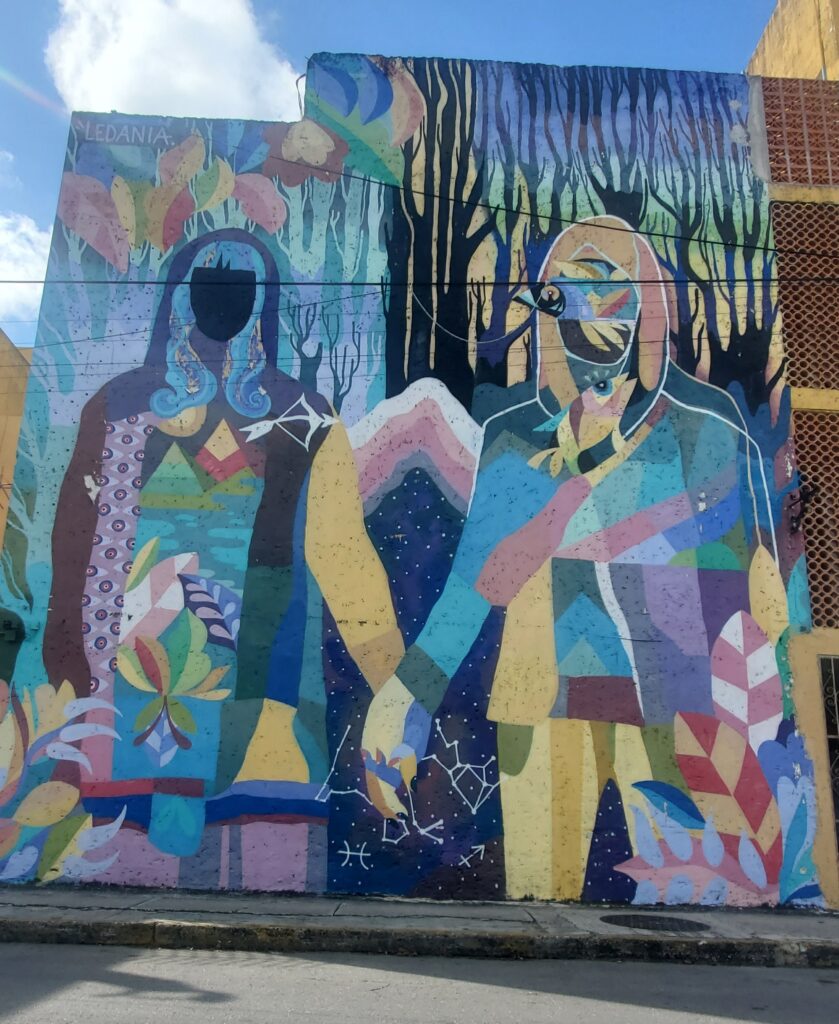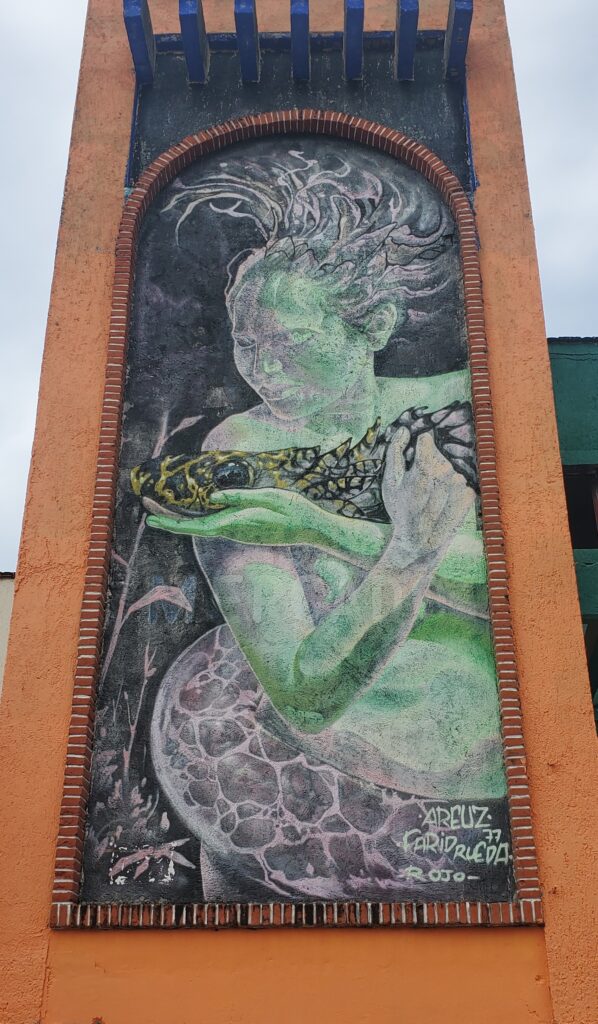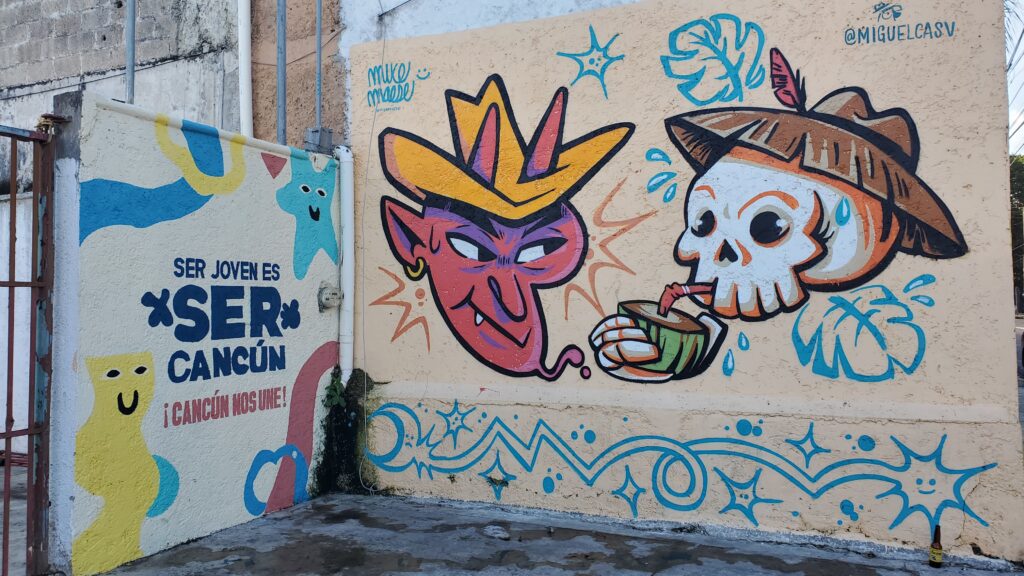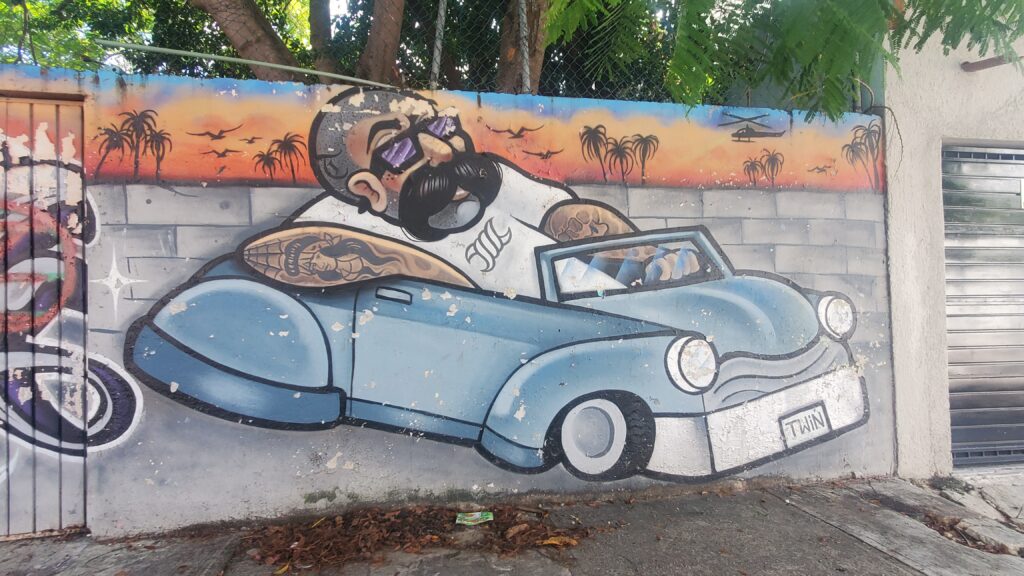Cancún, Mexico – The mural facing Parque de las Palapas reads “Ser joven es ser Cancún”. Being young is being Cancún. The motto highlights this city’s youthful energy but also its short history. Cancún was founded in 1970, when the government of Mexico decided they wanted to develop a tourist resort city on the Caribbean coast. Prior to that, there was a tiny fishing village at Puerto Juarez (now part of El Centro) and a coconut plantation on the island that is now the Zona Hotelera. The government built nine luxury resorts on the beach, and the rest is history.
Fifty years later, Cancún is one of the world’s most popular tourist resorts, and the development has spread down the Caribbean coast, the so-called Riviera Maya. It’s incredible that this entire place was created – out of the blue – over the course of a few decades.
El Centro
Cancún held very little appeal for me, mainly because I am not a fan of all-inclusive resorts. Fortunately, I discovered that there’s a whole world outside the hotel zone – a lively cosmopolitan city where people actually live, shop, work, create and congregate. This is downtown Cancún, aka El Centro. This is where you can experience contemporary urban Mexican culture, from hip-hop music to street art. Sample local restaurants and street food (cautiously) to get a taste for Yucatecan cuisine. And meet the Cancunenses on their own turf – in the parks and markets and streets of their hometown.
I am staying in Mezcal Hostel (also called Nomad Enigmatic), which is perfectly located in a residential area, steps from downtown Cancún’s liveliest dining strip. The hotel occupies several interconnected historic houses, creating a maze of rooms and courtyards, with super stylish decor and hip hangout space. It is the perfect homebase to explore this buzzing city.
I ended up having a blast in this vibrant young city. One of the best surprises of my stay was the fantastic street art.
Muralismo
In the 1920s, following the Mexican Revolution, the new government began commissioning works of public art to depict historical events, celebrate cultural heritage and inspire national pride. Grand, colorful murals were the medium of choice to reach uneducated populations. So began Mexican Muralism, a movement defined by artists such as Diego Rivera and José Clemente Orozco.

Still today, murals are a significant feature of urban culture in Mexico, and Cancún is no exception. In the 21st century dozens of national and international artists have left their mark on the facades of downtown buildings.
I started looking in the streets around Parque de las Palapas, where I spotted Ser Joven es ser Cancún, per above, as well as this stunner by Columbian artist LeDania.
Nearby, Parque del Pintor has recently been a venue for Cholo-style masterpieces by local twin brothers Happyone and Twinone. (Twins! Reminds me of the murals in Boston by Brazilian street artists Os Gêmeos which I wrote about here and here).
And along the western side of Avenida Náder, there is a string of murals with environmental themes, including several by nationally known artists Farid Rueda and Gonzalo Areuz.
Living in the Moment
Anastasiya Fomchina offers street art walking tours in El Centro through her company City Art Tours Mexico. I asked her to recommend her favorite murals for visitors to seek out when visiting Cancún. She replied that “street art evolves rapidly—murals and graffiti lose their colors quickly, especially in humid climates like Cancún, and most are repainted every two to three years.” So she instead offered recommendations of local artists, whose work often appears around the city (including some mentioned above).

Her words got me thinking about the temporary nature of this art form – its evolution, as she called it. Only for a time, the mural is part of the street scape, inspiring contemplation or appreciation, before gradually fading into the edifice, and then getting covered by another piece. There is no expectation of immortality. Unlike other kinds of art, which may hang in a museum for decades, street art never gets old. In that way, it is a particularly appropriate medium for this vibrant young city. Ser joven es ser Cancún!


